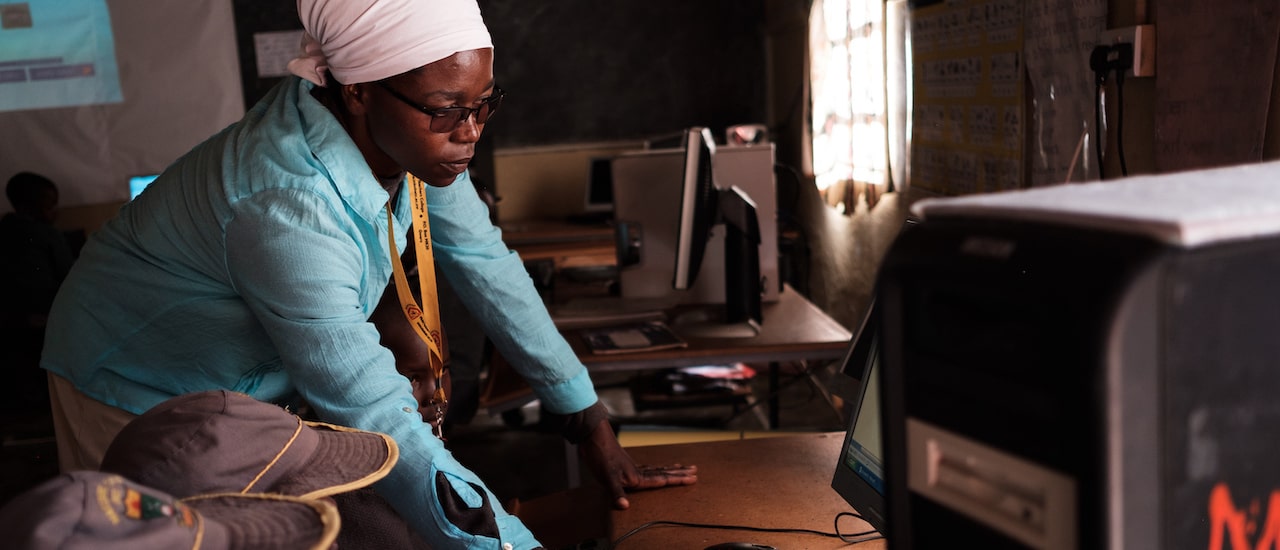“We are at a tipping point.”
We are used to hearing this in relation to the climate crisis the world is facing. And it makes sense. Crossing the 1.5 degrees Celsius threshold will jeopardize our survival as a species on this planet. We don’t want to cross that line of no return. We all want to survive.
But there is another tipping point that will have positive outcomes. It can get us on the other side of the digital divide. A point of no return where the consequences are exciting: achieving the goal of universal connectivity.
People living in rural, isolated, and low-income areas are struggling without Internet connectivity. Communities who are the first to feel the devastating effects of climate change are also the ones missing out on the opportunities the Internet offers. But they have been creating solutions to solve this locally, building and maintaining their own Internet infrastructure through community networks, municipal networks, social enterprises, and other complementary access solutions.
Those models have proven to be successful at adapting to local circumstances and needs, and they are at a tipping point. The right incentives and conditions can help these solutions grow to have an even greater impact in connecting the unconnected—supporting a movement that will not stop until we achieve universal connectivity.
Pushing Past the Tipping Point
To push past this tipping point, we need to unlock innovative financing mechanisms that enable us to connect the hardest-to-reach places in the world. Governments and policymakers are at the forefront of this challenge.
This is why we supported and actively participated in the development of the Financing Mechanisms for Locally Owned Internet Infrastructure report.
The report shows why complementary access and network solutions, such as community networks, are key to bridge the digital divide. It provides insight into how their ownership and operating models contribute to the connectivity ecosystem, and successful strategies for innovative financing and de-risking these solutions.
The report shows that there are three stakeholders playing key roles in unlocking more funding and financing mechanisms to these solutions: governments and policymakers, community connectivity providers, and funders—such as the Internet Society.
While all stakeholders are essential, we would like to highlight the actions that governments and policymakers can take.
How Governments Can Help Connect the Unconnected
Governments create the enabling regulatory environment for complementary connectivity and access solutions to thrive. To do this, we encourage policymakers within regulators and ministries to:
- Integrate all types of complementary connectivity and access solutions, such as community networks, municipal networks, and social enterprises focused on connectivity infrastructure into national broadband plans, connectivity and telecommunications strategies, and digitization policies.
- Streamline licensing regulations and procedures that provide legal status to all types of complementary connectivity and access solutions.
- Create options for complementary connectivity and access solutions to:
- Access affordable spectrum usage, as well as infrastructure such as poles and ducts.
- Promote infrastructure sharing policies, wholesale open access to backhaul through open data platforms, or investments in physical infrastructure (dark fiber, conduits, and others).
At the same time, governments can contribute and encourage investment in complementary connectivity and access solutions by:
- Incentivizing innovative fiscal solutions such as fee exemptions (customs waivers on import duties for open-source hardware and software) and tax breaks for investors.
- Contributing funds, such as universal service and access funds (USAF), voucher programs, grants, low-interest loans, and loan guarantees for complementary connectivity and access solutions.
- Supporting capacity building, feasibility studies, quality assurance, technical and management expertise, governance models, and open-source tools to all stakeholders contributing to bridge the digital divide.
At the Internet Society we are ready to collaborate with regulators, policymakers, and governments from around the world to achieve, once and for all, the universal connectivity that is required so no one is behind.
Let’s get past that tipping point together.
Read the report and learn more about successful financing strategies to connect the unconnected.
Image copyright: ©Nyani Quarmyne


